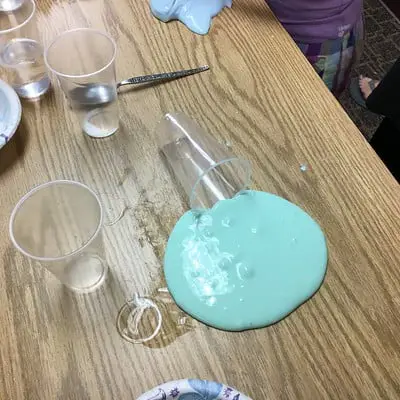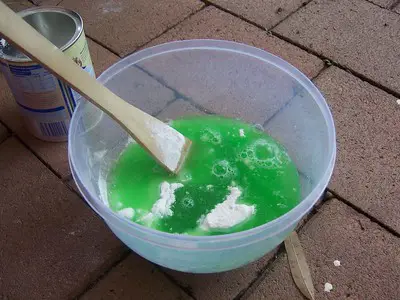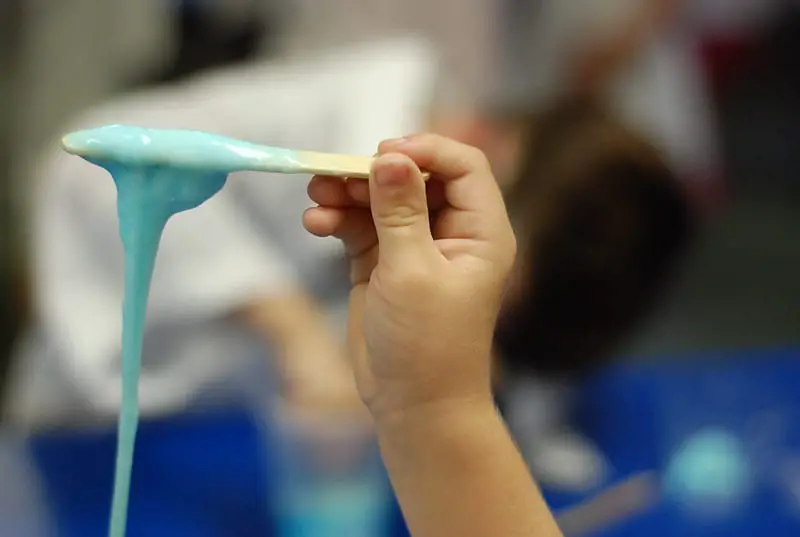Playing with slime is extremely fun. Be it, children or adults, nobody can resist playing with it. With so many DIY projects going on, it’s nice to be able to mix things up a bit. You can pretty much customize your slime with different ingredients, and a lot of people are wondering, can you use acrylic paint to make slime?
Yes! You can definitely use acrylic paint to make slime. It’s one of the most versatile and best types of paint out there. In this article we go over some questions, as well as a guide on how to make your own slime. Let’s get to it!
Now, the question arises – how to make slime using acrylic paint, and is its consistency as good as the original one?
What Ingredients Are Required to Make Slime Out of Acrylic Paint?
If you already have acrylic paint, there are a few more things you will need to make slime. Let’s take a look at all those ingredients and their role in the slime-making process for more clarity.
1. Glue
Apart from acrylic paint, you need glue for making slime. Glue is needed for the flexibility and rubber-nature of the slime. Now, keep in mind that not all glues work efficiently to get the perfect slimy texture. So, cheap stationery glue may or may not guarantee success.
On the other hand, if you go for a glue containing the ingredient – PVA, then you will definitely get some excellent results.
For example, you can get Elmer’s Glitter Glue, Elmer’s White Glue, Elmer’s Clear Glue, or Crazy Art Glue.
2. Water
Water is one of the most readily-available ingredients for making slime. Now, why do you require water?
The simple reason is that slime needs to have stretchability. So, just like glue, water allows the slime particles to slide over each other. If you don’t use water, your slime will end up having the texture of plastic.

3. Liquid Starch
Liquid starch is a type of laundry product available in many stores. This particular ingredient is one of the best slime activators. I recommend this Station-Flo starch from Amazon. It’s very affordable and it’s big enough to use on multiple slime projects!
This ingredient helps in binding and linking the slime particles together so they don’t break apart.
4. Acrylic Paint or Food Coloring
Lastly, for the final touch up of the slime, you can either make use of acrylic paint or food coloring as per their availability. I highly recommend Arteza acrylic paints, because they are very rich on color, and are overall excellent paints. If you decide to go with food coloring, this Nomeca 12 piece set is great for slime.
These ingredients give the slime its color and beauty. Now, let’s talk about how you can make slime using the above ingredients.
How to Prepare Slime Using Acrylic Paint

Step 1: Get All The Ingredients With Proper Proportions
The first step is to get all of the above-mentioned ingredients in the following proportions:
- ½ Cup of Water
- ½ Cup of Any Suitable Glue
- ¼ Cup of Liquid Starch
- Spoonfuls of Acrylic Paint (as per requirements)
Once, you have all of the ingredients, we can move on to step 2.
Step 2: Combine Glue With Water
The first actual step for slime making is getting glue and water mixture.
- In a bowl, pour ½ cup of glue.
- Along with this, add ½ cup of water to it.
- Keep stirring both of them till they are combined properly.
Step 3: Add Acrylic Paint/Food Coloring to It
In this step, all you need to do is grab the bottle or tube of your favorite acrylic color or even food coloring. Add a few drops of your favorite color, and keep mixing it until the glue and water combination gets the exact color.
If you want multi-colored slime, you can make separate glue and water mixtures, and add different colors to each of them.
Step 4: Add Liquid Starch
Then, the last step of adding ingredients is to pour 1/4th cup liquid starch into the mixture.
Step 5: Get The Final Product!
You will notice that the mixture is gaining the consistency of the slime as you add the ingredients.
Once, you feel like the consistency is right, you can use it!
Tips For Preparing the Perfect Slime at Home

If you’re preparing slime at home, you may want to keep the below things in mind.
Tip #1 Always Get the Right Measurement
An important thing to keep in mind is that you need to have a perfect measurement of all ingredients to get the slimy texture. If you don’t, your slime may get very loose, runny, or solid.
Tip #2 Make Use of Decorative Things For Fancy Slime
If you want to make your slime look more attractive, you can always make use of fancy stuff such as glitter or glow-in-the-dark paint! Check out this 56 piece glitter set here, and add it to your slime!
I also recommend putting foam beads or even micro jewelry beads in the slime for a different type of texture. There are even sensory friendly slushy beads that you can add. My kids also like to put colorful sequin in their slime. As long as it’s safe, and a parent is supervising young children, you can really put just about any non-sharp tiny object in there.
Tip #3 Try Out Alternatives
If you don’t have liquid starch at home, you can make use of ¼ tsp baking soda and buffered saline solution available in pharmacy stores. Or, just one cup of cornstarch for fluffy slime. Although I must say from experience, liquid starch is the most efficient of these choices.
Final Thoughts
You just need a handful of ingredients with proper measurements and you don’t have to buy expensive slime from stores! Making slime at home is great project for kids of all ages, and even fun for adults too. Always have fun and feel free to be as creative as you want with your slime.
Always remember to have fun, keep small pieces away from children if they aren’t being supervised, and keep your imagination wild when it comes to art.
Don’t forget to check out my other articles for everything you need to know for painting with acrylics.

